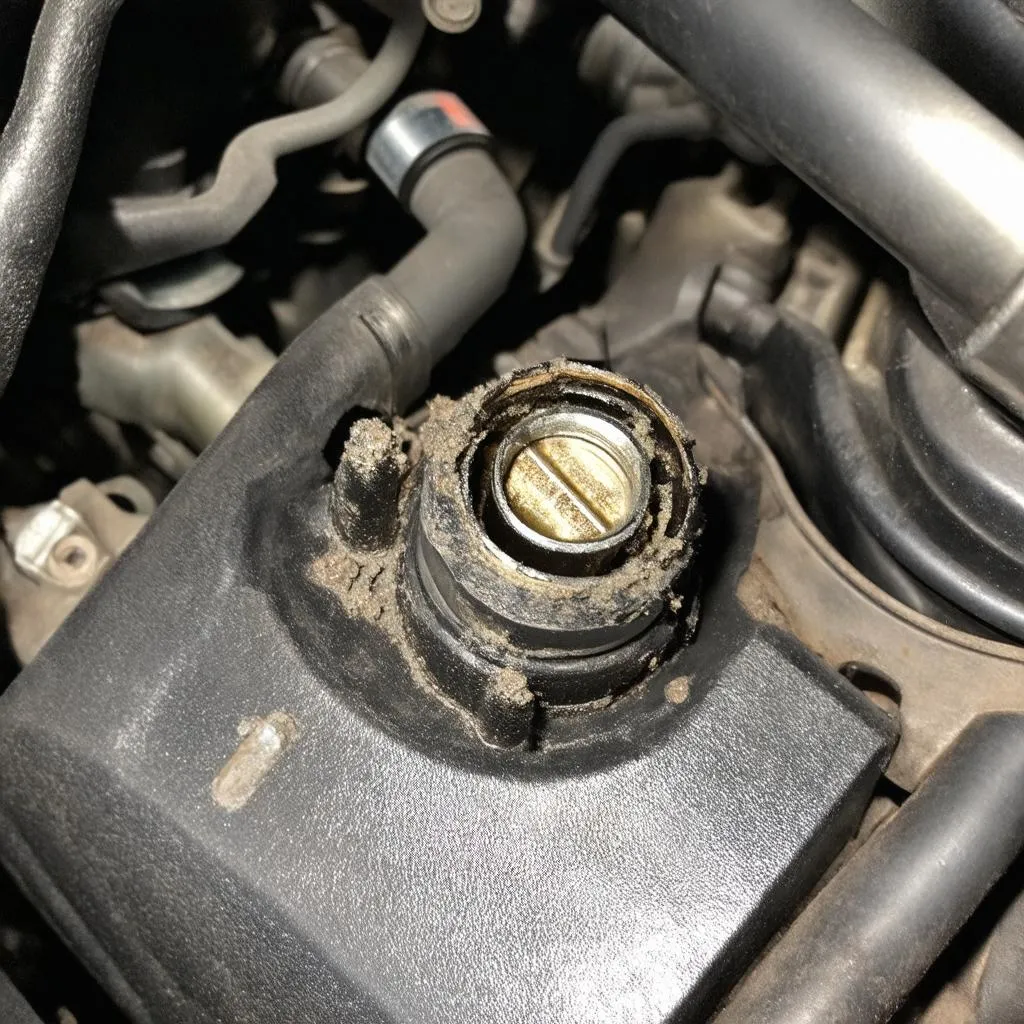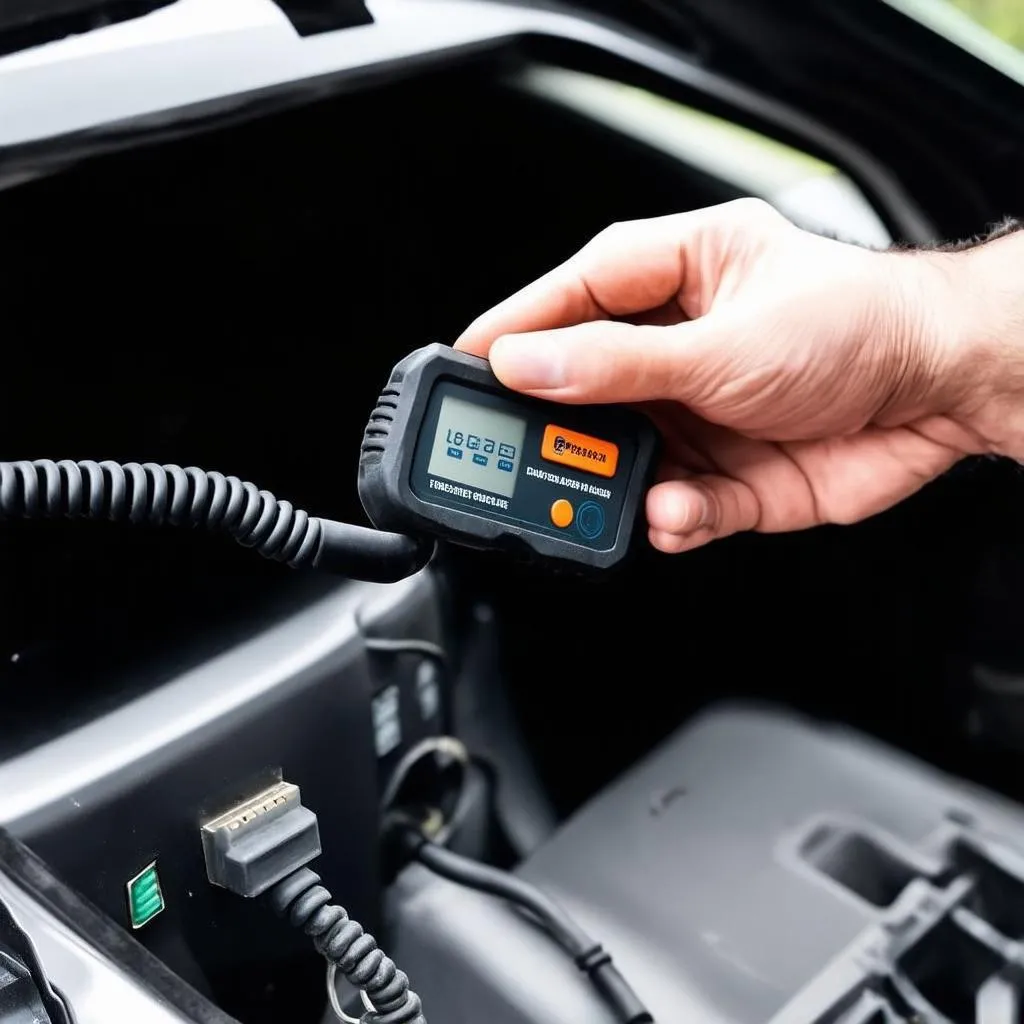Have you ever been driving down the road, minding your own business, when suddenly a yellow light on your dashboard throws a wrench in your plans? That, my friend, is the dreaded “check engine” light, and it can mean a whole lot of things. One of the most common culprits behind this automotive mystery is the OBD code P0116, which points to an issue with your Engine Coolant Temperature (ECT) sensor circuit.
Think of your car’s engine as a finely tuned machine. Like any good machine, it needs to operate within a specific temperature range for optimal performance. That’s where the ECT sensor comes in, acting like a watchful guardian, constantly monitoring the engine’s temperature and reporting back to the Engine Control Unit (ECU). If the ECU receives erratic readings from the ECT sensor circuit – like those associated with a P0116 code – it can throw your engine’s performance out of whack.
Understanding the OBD Code P0116
This code specifically means the ECU has detected a problem with the signal coming from the ECT sensor circuit. This could manifest in a number of ways, from poor fuel economy to difficulty starting your car, even engine damage in extreme cases.
What Causes a P0116 Code?
Let’s delve into the common culprits behind this troublesome code:
- Faulty ECT Sensor: Like any hardworking component, the ECT sensor itself can wear out over time, leading to inaccurate readings.
- Wiring Woes: Damaged, corroded, or loose wiring in the ECT sensor circuit can disrupt the signal flow, causing the P0116 code.
- Coolant Conundrum: Low coolant levels or even the wrong type of coolant can impact the ECT sensor’s ability to function correctly.
- ECU Glitch: While less common, it’s possible the ECU itself is experiencing issues, misinterpreting the signals from the ECT sensor.
 faulty sensor
faulty sensor
Symptoms of a P0116 Code
Now that we understand the potential causes, let’s look at how this code might manifest in your vehicle’s behavior:
- Illuminated Check Engine Light: This is usually your first clue that something is amiss.
- Engine Performance Issues: You might notice rough idling, hesitation during acceleration, or even stalling.
- Decreased Fuel Economy: When the ECU doesn’t receive accurate temperature readings, it can’t optimize fuel delivery, leading to a drop in fuel efficiency.
- Overheating Engine: In severe cases, a faulty ECT sensor can lead to engine overheating, potentially causing significant damage.
Troubleshooting and Fixing a P0116 Code
Don’t panic! While a P0116 code can be a nuisance, it’s usually fixable. Here’s a step-by-step approach to tackling this automotive gremlin:
- Read the Code: Start by confirming the P0116 code with an OBD-II scanner. This will rule out other potential issues.
- Inspect the ECT Sensor: Locate the sensor (usually near the thermostat housing) and check for any visible damage, corrosion, or loose connections.
- Check the Wiring: Carefully examine the wiring harness connected to the ECT sensor for any signs of fraying, burning, or damage.
- Inspect the Coolant: Ensure your coolant level is adequate and that you’re using the correct type of coolant specified for your vehicle.
 OBD-II scanner
OBD-II scanner
If you’re comfortable working on your car, you can attempt to replace the ECT sensor and repair any wiring issues yourself. However, if you’re unsure, it’s best to consult a qualified mechanic.
Frequently Asked Questions About the P0116 Code:
- Can I still drive my car with a P0116 code? While you might be able to drive for a short distance, it’s not recommended. Driving with a faulty ECT sensor circuit can lead to further engine damage and decreased fuel economy.
- How much does it cost to fix a P0116 code? The cost can vary depending on the severity of the issue and whether you choose to DIY or visit a mechanic. Typically, you’re looking at anywhere from $50 for a DIY sensor replacement to a few hundred dollars for professional repairs.
Similar OBD Codes:
- P0117: Engine Coolant Temperature (ECT) Sensor Circuit Low Input
- P0118: Engine Coolant Temperature (ECT) Sensor Circuit High Input
- P0128: Coolant Thermostat (Coolant Temperature Below Thermostat Regulating Temperature)
Car Makes Commonly Affected by the P0116 Code:
While any car can experience a P0116 code, some makes known to encounter this issue more frequently include:
- Honda
- Toyota
- Ford
- Chevrolet
- Nissan
Don’t Let a P0116 Code Leave You Stranded!
Remember, your car is trying to communicate with you through that check engine light. Early detection and action are key to preventing more extensive (and expensive) damage down the road.
Need help diagnosing or fixing your car troubles? Contact us on WhatsApp at +84767531508. Our team of auto repair experts is available 24/7 to provide you with the assistance you need.
We hope this guide has shed some light on the often-confusing world of OBD codes. Stay tuned for more helpful tips and tricks on keeping your vehicle running smoothly!